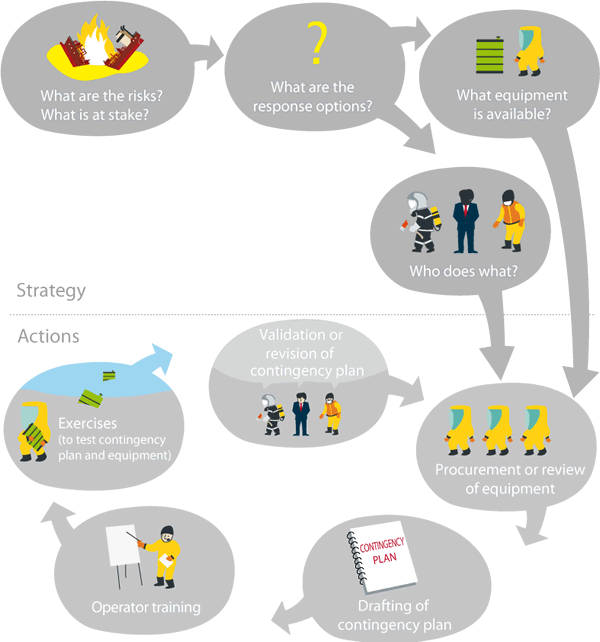
The first stage in preparing for response involves
developing a contingency plan that specifies the
methodology to be adopted in the event of an accident.
In many countries, all ships, factories and port facilities
must have a contingency plan before beginning
operations. Countries also often have one or more
such plans. They are established in anticipation of
incidents and should be regularly updated according
to the products involved but also with regards to
changes to regulations and improved expertise.
Generally speaking, contingency plans address five crucial points:
Finally, through training and exercises, contingency plans can be implemented, validated and improved.
